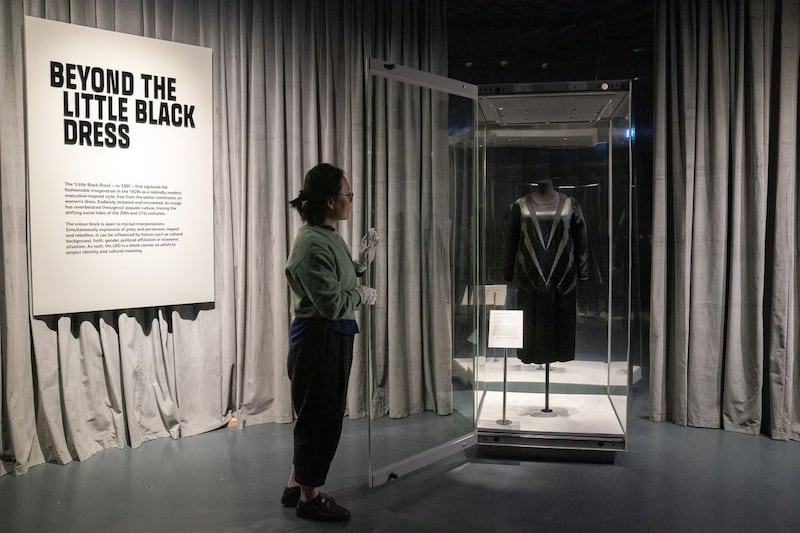Curators are “delighted” to have secured a little black dress designed by Chanel in 1926 to open an exhibition on the success of the garment over almost a century.
Beyond The Little Black Dress, which launches at the National Museum of Scotland in Edinburgh next month, will bring together more than 60 looks from collections and designers around the world.
It opens with a long-sleeved black day dress designed by Gabrielle Coco Chanel in 1926, which was hailed by US Vogue as “the frock that all the world will wear”.
The silk crepe dress is on loan from the Kunstgewerbemuseum (Museum of Decorative Arts) in Berlin.

Georgina Ripley, principal curator of modern and contemporary design at National Museums Scotland, said: “The dress is incredibly significant for its own merit anyway, but for our exhibition it’s really pivotal because we are opening the exhibition with the idea that this is kind of the birth of the little black dress.
“The well-known story within fashion history is of Chanel being the inventor of the little black dress and 1926 being the date, and that’s because a very simple long-sleeved day dress of silk crepe de Chine was featured in American Vogue in the October edition and it called this dress the ‘frock that all the world will wear’.
“The dress that we have on loan from the museum in Berlin is not the exact dress that featured in that Vogue article, but it is the exact same style, made from the same sort of fabric, and it’s incredibly rare to actually find little black day dresses from that date in collections.
“It’s been amazing for us to be able to locate one, to be able to tell this really important story within the history of the little black dress.”
Vogue compared the dress to Henry Ford’s model T motor car, linking it to the idea of the democratisation of fashion, although it would still have been very expensive and only affordable to the wealthy.
The dress drew on the functionality of menswear and of clothes worn by those working in the service industry, such as maids and shop workers.
Chanel’s contemporary Paul Poiret described the style as “poverty de luxe” – things that have humble origins elevated to couture-style clothing.
While black was already in fashion before 1926 and other little black dresses had been created, something about Chanel’s design was seen as being an important moment in the modernisation of women’s fashion.
The exhibition was originally due to open in 2020 but was pushed back due to Covid, and curators were “thrilled” they could still borrow the dress from the museum in Berlin this year.
Ms Ripley said: “This is such a natural place to start this story because it’s known in fashion history and we also wanted to confront head on that it really is just a moment that has been picked upon as the origin of the little black dress, but it would be really strange to tell that story without having that dress.
“We had our heart set on telling the story in that way and opening with this dress, so we’re delighted we’ve been able to see that mission through.”
The exhibition looks at fashions through the decades, from early pieces by Yves Saint Laurent, Christian Dior and Jean Muir to contemporary designers and brands such as Gareth Pugh, Simone Rocha and Off-White.
Areas of the exhibition are dedicated to highlighting black British designers whose work explores both blackness in terms of identity and the role the colour plays in crafting a futuristic, sci-fi aesthetic.
It also considers how perceptions of the colour black differ in a global context.
The exhibition runs from July 1 until October 29.








